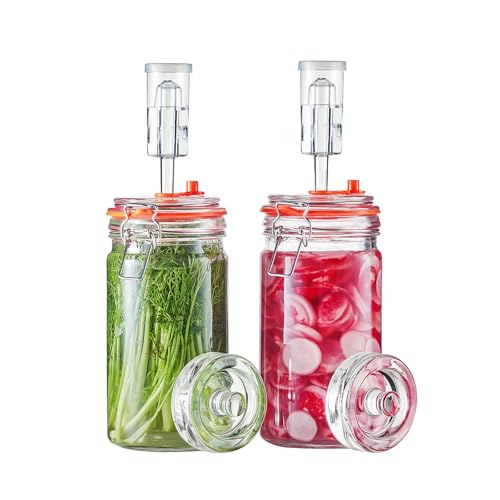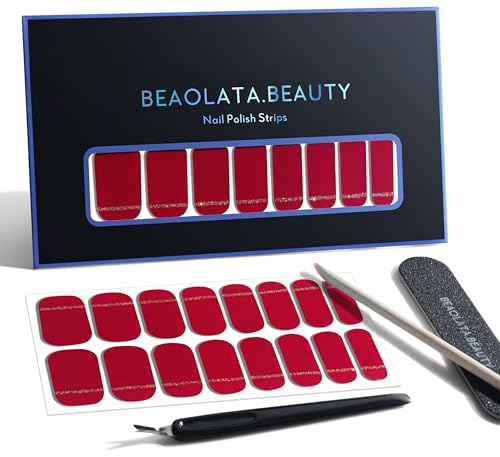You are using an out of date browser. It may not display this or other websites correctly.
You should upgrade or use an alternative browser.
You should upgrade or use an alternative browser.
Sacrificial tannins
- Thread starter Meadini
- Start date

Help Support Winemaking Talk - Winemaking Forum:
This site may earn a commission from merchant affiliate
links, including eBay, Amazon, and others.
I presume by other tannin additions you mean post fermentation. primary tannin are chosen to hold the color of the wine and add some oak taste but very little. post fermentation tannin is still required to oak the wine
Last fall I used shredded oak during fermentation, which was removed with the grape pulp during pressing. All wines are currently aging with oak cubes in carboys and neutral barrels. If you're asking about adding powdered grape tannin, I do not add it for 1st run wines, but it is added for 2nd run wines as the pulp is deficient in tannin.
Yeah, I gotta start expressing myself better in my posts. I meant powdered tannins and chips together in primary. All my wines are less than a year old, but they seem to lack a structure or maybe body that I associate with big reds. I dont know if they’re too young yet, or if I missed something subtle in the process.Last fall I used shredded oak during fermentation, which was removed with the grape pulp during pressing. All wines are currently aging with oak cubes in carboys and neutral barrels. If you're asking about adding powdered grape tannin, I do not add it for 1st run wines, but it is added for 2nd run wines as the pulp is deficient in tannin.
you have a variety of flavor and mouth feel which can be produced with tannin addition (see the Scott Labs handbook), My local store has one choice which is probably a grape extract. Oak chunk/ powder seem to be missing the bind the proteins on the tongue/ dehydrating type of compounds, but provides aroma and flavor notes.
. I meant powdered tannins and chips together in primary. All my wines are less than a year old, but they seem to lack a structure or maybe body that I associate with big reds. I dont know if they’re too young yet,
IMO creating a big red takes a lot of independent steps that work together. This is my list, which is (of course) open to debate.I meant powdered tannins and chips together in primary. All my wines are less than a year old, but they seem to lack a structure or maybe body that I associate with big reds. I dont know if they’re too young yet, or if I missed something subtle in the process.
Start with good fruit. Red juice makes a good wine, but it won't compete with reds fermented on the skins. From reports on this forum, it may be the skin packs can produce a similar result to fresh fruit. But for the folks that can, ferment fresh grapes.
Fermentation Oak. Based upon my 2020 wines, fermentation oak is a must. I used 1 lb shredded oak for four 36 lb lugs (144 lbs total), which was a bit more than the package advised. This helps maintain the color and preserves the natural grape tannin. IMO, because the fermentation period is so short, it makes more sense to use shredded oak as it has a LOT more surface area to interact with the wine.
Note: I also added fermentation oak and powdered tannin to a 2018 Elderberry, which came out well, considering the concentrate I used contained apple and pear juice. I added powdered tannin to fruit wines to increase the overall body.
Enzymes and/or extended maceration. The point is to literally get the most out of the grapes. I used Scottzyme Color Pro last fall and am very pleased with the results. I'm reviewing other enzymes to determine if I want to add or change for the fall. I have not done extended maceration, but the reports I'm seeing are very good.
Press the grapes hard to extract constituents. I did 2 pressings of my 2019 2nd run, first to a point where the handle of the basket press was becoming difficult to turn, netting 15 gallons. Then I continued pressing the remainder to the point where we could not turn the handle, netting 7 gallons. The hard pressed wine was much heavier and was very unpleasant to taste. I wasn't sure if it was useful for anything, or if I'd eventually toss it.
I needed topup wine for the barrel, so I used some of the hard press, and it blended well. At the 1 year mark the hard pressed wine mellowed tremendously. 8 months later, I prefer the lighter pressed wine due to the oak/barrel aging, but the hard pressed is very nice on its own. It's heavier than the light press and without oak it's fruitier than I generally prefer, but I am pleased with the result. [I sort-of wish I'd combined the two, but if I had done that I'd not have learned this lesson.]
Aging oak. Whether it's a newer (non-neutral) barrel or oak adjuncts (cubes, staves, spirals, etc.), oak flavoring adds to the wine and contributes to the overall effect.
Barrel aging. The concentration effect (water & alcohol evaporate, concentrating the remaining constituents) and the micro-oxidation produce an effect I don't believe can be done in any other fashion.
TIME. Regardless of what else is done, big reds need time to develop. This is another thing for which there is no substitute.
==
If you do the above, I expect adding powdered tannin is not necessary, and as @Rice_Guy indicates, it won't produce the same result as natural grape tannin. However, I suspect the powdered tannin added prior to fermentation may be useful as more sacrificial tannin, to preserve more of the natural grape tannin.
Big reds are not developed at the 1 year mark, but should give an indication of what they will become. The wines already made may not reach your expectations, but should improve with another year's aging.
Time is a red's good friend. Read my bizarre test results post, in which I reported that a 20 month old 2nd run wine beat an 8 month old 1st run in a taste test. A year from now I'm going to conduct the same test -- I have expectations the 2020 1st run will be the winner as by that time it will have a full year in the barrel and 6+ months in the bottle.
Another thought is glycerin. Read my Glycerin post, where I detail the comparison of the same wine, one with and one without added glycerin. The difference was more astounding that I expected.
Sight unseen, my suggestion is to add glycerin (1/2 to 1 oz per gallon) at bottling time and give the wines more time. Better yet, bottle 3 bottles without, 3 bottles with 1/2 oz/gallon, and 3 bottles with 1 oz/gallon. Taste test at the 6, 9, and 12 month marks.
Some advice experienced winemakers offer is easy and you can take it on faith as so many of us agree. Other things, like the glycerin, you honestly need to experience for yourself to truly perceive the differences.

$74.99 ($74.99 / Count)
Delirious Trembles Belgian Golden Strong Ale, Beer Making Extract Kit
Boomchugalug

$29.99 ($15.00 / Count)
$41.80 ($20.90 / Count)
2 Pack 1 Gallon Large Fermentation Jars with 3 Airlocks and 2 SCREW Lids(100% Airtight Heavy Duty Lid w Silicone) - Wide Mouth Glass Jars w Scale Mark - Pickle Jars for Sauerkraut, Sourdough Starter
Qianfenie Direct

$175.50 ($175.50 / Count)
Wine Ingredient Kit - CRU SELECT Chilean Style Malbec
Bridgeview Beer and Wine Supply

$29.99 ($15.00 / Count)
JILLMO Fermentation Jar, 1 Liter Fermentation Jar with Fermenting Weights and Airlocks, Pack of 2
Raiser Co., Ltd

$15.99 ($4.00 / Count)
$24.99 ($6.25 / Count)
MEKOLIFE 4-Pack 10 Gallon Grow Bags with Window to Harvest - Potato Grow Bags with Flap and Handles - Thickened Fabric Pots - Large Grow Bags - Tomato Garden Vegetables Grow Bags
LING LI

$14.29
$16.99
FastRack Glass Wine Fermenter Includes Airlock, 1 gallon Capacity, clear (B00BEYREIW), 1 Count (Pack of 1)
Hobby Homebrew

$24.34
$36.99
Jajadeal Plant Tying Machine Tool for Grapes, Raspberries, Tomatoes and Vining Vegetables, with 20 Rolls Tapes, 10000pcs Staples and Replacement Blades (Green)
Jajadeal Official Store US

$128.50 ($128.50 / Count)
Cru International - Washington Merlot Style Wine Ingredient Kit
Bridgeview Beer and Wine Supply

$169.50 ($169.50 / Count)
Wine Ingredient Kit - CRU SELECT Australia Style Chardonnay
Bridgeview Beer and Wine Supply

$155.96 ($155.96 / Count)
Winexpert Revelation Napa Cabernet Sauvignon 3 Gallon (Limited) Wine Ingredient Kit
Discount Hydroponics LLc

$169.50 ($169.50 / Count)
Wine Ingredient Kit - CRU SELECT French Style Merlot
Bridgeview Beer and Wine Supply

$175.50 ($175.50 / Count)
Wine Ingredient Kit - CRU SELECT Italian Style Sangiovese
Bridgeview Beer and Wine Supply

$14.80
$24.00
The Geography of Wine: How Landscapes, Cultures, Terroir, and the Weather Make a Good Drop
Amazon.com

$22.99
$40.00
The Sommelier's Atlas of Taste: A Field Guide to the Great Wines of Europe
Amazon.com
Similar threads
- Replies
- 5
- Views
- 452


























![[Upgraded] 9Pcs Tree Root Growing Box with Drain Holes, Half Transparent Plant Rooting Propagation Ball & Metal Core Twist Ties, for Fast Propagation Plants (Size M)](https://m.media-amazon.com/images/I/514MWQxtWOL._SL500_.jpg)











